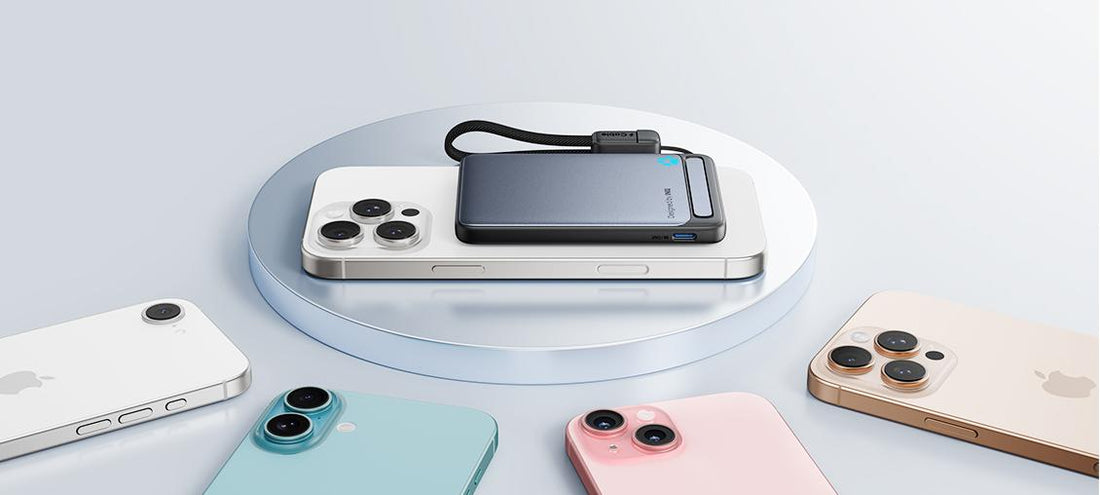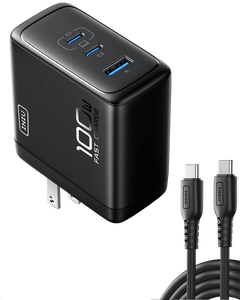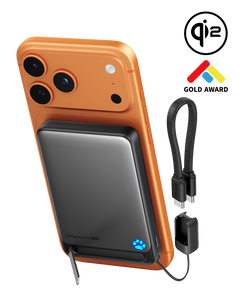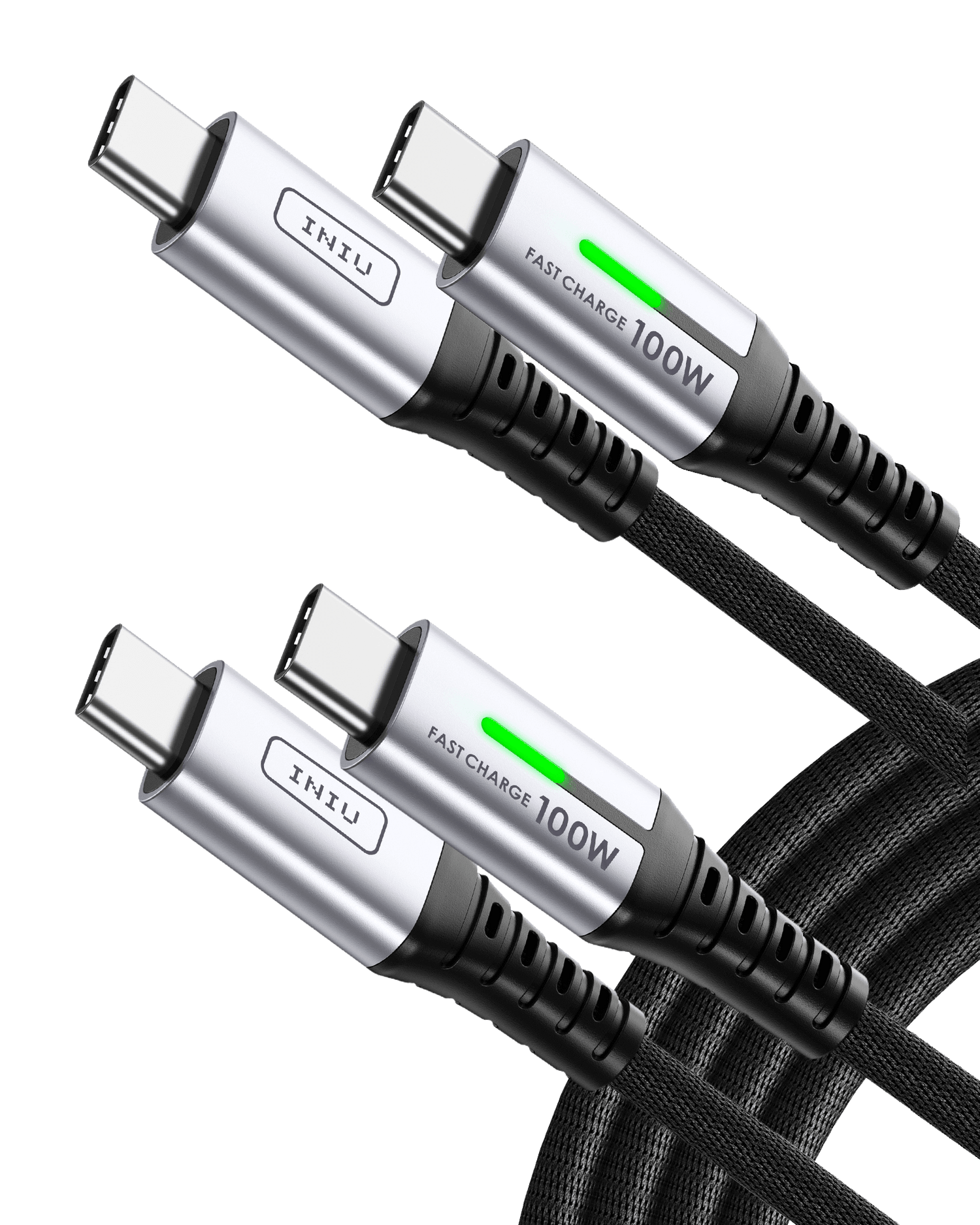
iPhone 17 Rumors — Which Chargers and Power Banks Should You Prepare?
As the iPhone 17 release date approaches, leaks about the ultra-thin iPhone 17 Air have focused attention on one uncomfortable trade-off: to make the phone thinner and lighter, Apple may have reduced the device's battery capacity. For anyone who depends on their phone all day, that rumor changes the calculus for what chargers and portable batteries to carry.
This article checks the facts we can verify, explains which parts remain rumors, and gives practical, industry-grade buying recommendations for iPhone 17 charger and iPhone wireless power bank choices.
What's new about the iPhone 17's battery?
iPhone 17 series is rumored to launch an Air model to replace the previous Plus model. The Air model focuses more on the lightness and thinness of the body, minimizing the weight and volume of the phone. Multiple reputable rumor trackers and tech outlets report that the iPhone 17 Air could ship with a battery in the ~2,800–2,900 mAh range. These numbers come from leaked images, supply-chain chatter, and independent leakers; they are not official Apple specifications and should be treated as provisional until Apple confirms them at the event. In plain terms, the Air model appears to be engineered for extreme thinness at the expense of battery capacity.
Why that matters: a smaller battery means average users—especially those who stream media, run navigation, or use data-intensive apps—will reach low battery states sooner than with previous generation “non-Air” iPhones. That drives demand for external charging solutions (carryable PD power banks, MagSafe magnetic power banks, or faster wall adapters).
Is Apple doing anything in software to offset a smaller battery?
Yes — it's said that Apple's upcoming iOS 26 includes a feature (marketed as Adaptive Power Mode) that dynamically reduces background activity, adjusts performance budgets, and can toggle low-power behaviors to extend usable time. This can meaningfully help light-to-moderate users, but software optimization can only compensate so much for a large delta in battery capacity. In other words, software helps, but it's not a substitute for extra watt-hours for heavy users.
What charger does iPhone 17 use — has Apple kept USB-C?

Short answer: yes. The industry consensus and multiple reports indicate the iPhone 17 lineup will continue with USB-C and USB Power Delivery (PD) for wired charging—Apple has moved away from Lightning in recent generations, and regulation + ecosystem trends favor USB-C. This means users should prioritize PD-capable adapters and cables when preparing for a new iPhone.
There are rumors that the iPhone 17 series will support higher-power charging input (35W or higher), which means that the charging speed of the iPhone 17 may be further improved. Therefore, when choosing a charger, perhaps people who plan to buy the iPhone 17 series can consider chargers and power banks with higher power output.
Why GaN chargers are worth considering:
Next-generation GaN (Gallium Nitride) chargers are highly recommended for iPhone 17 users. Compared with traditional silicon chargers, GaN technology allows for:
- Higher power in a smaller size — a 30–45W GaN charger can be more compact than Apple’s own 20W brick.
- Better thermal efficiency — reduced heat generation means safer, more stable charging.
- Multi-device support — many GaN chargers come with multiple USB-C ports, so you can charge your iPhone, iPad, and MacBook simultaneously.
For most buyers, a GaN USB-C PD charger strikes the best balance between portability, speed, and future-proofing for the iPhone 17 lineup.
What should iPhone 17 users consider when buying a power bank?
Power banks have alleviated iPhone users' anxiety about battery life. Choosing a suitable power bank can help iPhone users keep their phones running anytime, anywhere—especially after Apple reduced battery capacity.
When selecting a power bank, the two most important factors are capacity (mAh) and output power (W):
Capacity (mAh / Wh): This determines how many times the power bank can fully recharge your iPhone. While mAh is commonly used on packaging, the real-world usable energy also depends on voltage and conversion efficiency. High-quality banks typically deliver about 75–85% of their rated energy. As a simple guideline:
- A 10,000 mAh bank can charge an iPhone 17 Air roughly 2–3 times.
- A 20,000–25,000 mAh bank is better suited for heavy users or larger models like the iPhone 17 Pro Max, providing multiple full charges during long trips.
Output Power (W): Fast charging reduces downtime. Look for power banks that support USB-C Power Delivery (PD) or MagSafe/Qi2/Qi2.2 wireless charging. A 20–30W output is sufficient for everyday use, while 45W+ is ideal if you want faster top-ups or multi-device support.
Portability vs. Capacity: Larger batteries provide more charges but are heavier and bulkier. Decide whether you prioritize pocket-friendly design or extended backup. Of course, some power banks offer high capacity while minimizing size and weight. For example, the INIU P62-E1, the smallest power bank on the market with a 20,000mAh, 65W capacity, achieves both portability and high capacity.
Safety and Certification: Ensure the power bank has recognized safety certifications (UL, CE, FCC) to protect both the battery and your device.
In short, focus on a balance between usable capacity, fast charging capability, portability, and safety. For most iPhone 17 Air users, a 10,000–20,000 mAh PD or MagSafe-compatible power bank offers the best mix of convenience and reliability, while iPhone 17 Pro Max users may prefer larger, high-capacity banks for extended use.
Qi2.2 wireless charging power banks are coming soon: Wireless charging devices are developing at an increasingly rapid pace. Power banks that comply with the latest Qi2.2 standard will support wireless charging speeds of up to 25W, meeting the standard for fast wired charging. Rumors suggest that the iPhone 17 series may be the first Phone series that support the Qi2.2 standard. If you want to keep up with the new generation of wireless charging, consider choosing a power bank that supports this standard to ensure optimal compatibility and charging efficiency for your device.
Are there travel regulations I should worry about when choosing a power bank?

Yes — always. For airlines and many regulators, the governing metric is watt-hours (Wh), not mAh. Current broad rules (consistent across FAA/TSA/IATA guidance) are:
- ≤ 100 Wh: generally allowed in carry-on without approval.
- 101–160 Wh: permitted only with airline approval (often limited to two units).
- > 160 Wh: typically prohibited on passenger aircraft.
- Power banks must be carried in carry-on luggage, never checked.
Consequence for buyers: a 20,000 mAh bank at 3.7 V ≈ 74 Wh — safe for carry-on. But very large banks (e.g., 40,000 mAh nominal) may cross airline thresholds and require approval. Always check the Wh labeling on the unit and airline policies before travel.
Conclusion — what should a sensible buyer do right now?
At this stage, treat the iPhone 17 Air battery rumors as unconfirmed—Apple has not released official specifications yet. To be prepared for the new series, consider carrying a reliable MagSafe or USB-C PD power bank in the 10,000–20,000 mAh range for everyday use. Pair it with a compact GaN USB-C PD wall charger to minimize charging time. Wondering what charger the iPhone 17 uses? Current reports indicate USB-C PD, so choose adapters that support fast charging.
If you travel frequently, check the power bank's Wh ratings and airline regulations to ensure compliance. Most users will benefit from banks in the 10,000–20,000 mAh range, staying safely under the 100 Wh limit.
Finally, stay informed by following Apple's official announcements and news from the release event, so you can adjust your charging setup based on verified specifications rather than early rumors.
FAQ
When is the iPhone 17 release date expected?
Current reporting places the event in September 2025; Apple typically announces dates in early September. Confirm at Apple's official keynote.
What charger does the iPhone 17 use—USB-C or Lightning?
Reports and industry consensus indicate USB-C with USB PD for wired charging. Choose PD-capable USB-C chargers and cables.
Should I buy the best iPhone magnetic charger or a conventional bank?
If you value convenience and magnetic alignment (and want to avoid cables during short top-ups), a Qi2 / MagSafe magnetic bank is a strong choice—provided it's from a reputable maker and supports both magnetic wireless output and a wired PD port for faster charging. Additionally, considering purchasing a Qi2.2 standard power bank would be a future-proof option.
Do I need a 20,000 mAh bank for iPhone 17 Pro Max?
Not strictly necessary, but recommended for heavy users and travelers. Larger capacity yields fewer charge-anxiety moments and is more versatile for powering multiple devices.






